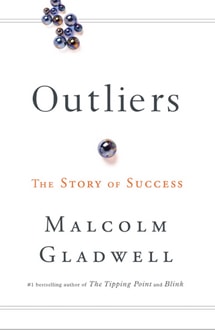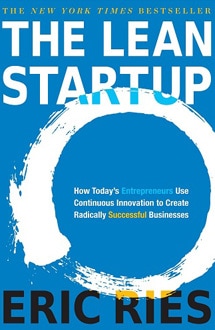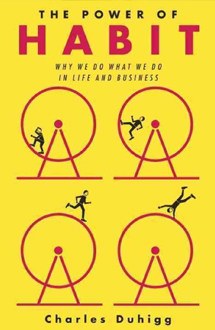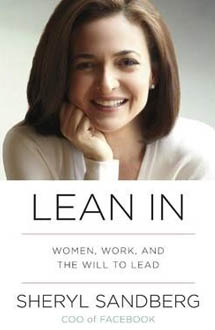“’Outlier’ is a scientific term to describe things or phenomena that lie outside normal experience. In the summer, in Paris, we expect most days to be somewhere between warm and very hot. But imagine if you had a day in the middle of August when the temperature fell below freezing. That day would be an outlier. And while we have a very good understanding of why summer days in Paris are warm or hot, we know a good deal less about why a summer day in Paris might be freezing cold. In this book I’m interested in people who are outliers— in men and women who, for one reason or another, are so accomplished and so extraordinary and so outside of ordinary experience that they are as puzzling to the rest of us as a cold day in August.” – Malcolm Gladwell
America loves successful people. They generate a sense of awe in the general public, which is second only to the inevitable question: “So, how did he become so successful/smart/rich?” Popular and numerous publications focus on the personalities, qualities, lifestyles, intelligence, and apparent bootstrapping of the successful. Stories about rising from lowly beginnings to great heights of success appeal to the hearts of millions. “In Outliers, I want to convince you that these kinds of personal explanations of success don’t work. People don’t rise from nothing.” (19) To that end, Gladwell offers the reader entertaining stories and some convincing data.
The Matthew Effect
Sociologist Robert Merton coined the phenomenon “the Matthew effect” after the biblical Gospel of Matthew. “For unto everyone that hath shall be given, and he shall have abundance. But from him that hath not shall be taken away even that which he hath.” (Matthew 25:29, NIV) Gladwell subscribes to the validity of this statement, and it is a core theme throughout Outliers. There are many advantages one person could have. But it is only the unique achievements of timing, sociology, ethnicity, parenting, and even luck that build success upon success upon success in those who are eventually seen as the pinnacle of what mankind can achieve.
10,000 Hours
Gladwell sets the stage for his book by charting statistics of how birth dates and birth years affect the success rates of everyone from hockey stars to industrialist tycoons. Having sufficiently peaked reader interest, he backtracks to reassure doubters by reaffirming that hard work is also important. Diverse examples include The Beatles and Bill Gates. His formula for success is a minimum of ten thousand hours of applied task learning, and he uses the stories of these two icons, and others, to illustrate it. This also leads into his next topic.
Intelligence and Upbringing
Gladwell covers types of intelligence as another partial predictor. Bill Gates and some other Gladwell examples are extremely intelligent and have a high IQ, as measured by standard tests. However, IQ is said to be like height in basketball: a certain height is required to achieve high success, but anything above that is unnecessary. Gladwell also conveys that IQ is not the only type of intelligence. He mentions the great advantage of what he calls practical, or social, intelligence. “It is procedural. It is a set of skills that have to be learned.” (110-111) Learning practical, social skills occurs most often in the large communities in which one grows up, and also within that small community called family. Borrowing on the work of sociologist Annette Lareau, Gladwell calls the parenting of middle and upper classes “concerted cultivation.” (104) The extreme manifestation would be called “helicopter parenting” today. But, in normal scenarios, parents’ backing up their kids creates a strong social and cultural advantage in creativity, higher expectations, inquisitiveness, and greater self-confidence. Lareau noticed a difference in lower socio-economic classes, where she saw this “concerted cultivation” lacking. Class structure can be an advantage in success.
When, Where, How and Why
Having set the stage for hard work and learned behaviors as factors in success, the author moves on the main theory that sets Outliers apart. Gladwell states that the major determiners of success are not in the control of the outlier, and are often set into motion generations before. “[N]o one— not rock stars, not professional athletes, not software billionaires, and not even geniuses— ever makes it alone.” (115)
- When could success happen? Gladwell illuminates windows of success for many of his story characters, and they make sense. Could Bill Gates have used his innate talents and become a successful computing entrepreneur and programming innovator if he was born a decade earlier, or a decade later? Would Andrew Carnegie have become a magnate if he was a child during the industrial revolution in the United States? The answer is obvious: no. Timing is a prerequisite.
- Where could success happen? Outliers shows how The Beatles played over 1,200 gigs night after night in Germany, perfecting their craft, in the years just before coming to the United States. Would they have still been as captivating on television without this live performance polish, or have been as successful? Most bands never play together even close to 1,200 times in their entire careers.
- How can success happen? It is here where Gladwell spends the majority of his pages and conveys most of his stories. “How’s” are hard to pin down, and generally left to the stories to illustrate. His longest example is the history of many Asian farming cultures, where hard work, operational intelligence, and long hours are normal. This then became part of their teaching system. The children went to school for somewhat the same hours that their parents worked. As a result, these students have “50 to 60 percent more learning time” than traditional U.S. 180 day school year students. (263) It is in this and other stories that Gladwell shows a belief that culture can be the biggest “how” factor.
- Why does success happen? These are perhaps the most interesting of the Outliers’ pages. Gladwell goes back and revisits some of his previous stories. These are ones that usually note some elements of success from within, based upon personal traits and actions. He then puts them in their larger global and timescale context. He argues that “the traditions and attitudes we inherit from our forebears can play the same role” as personal actions. (176) His final example story is that of his family lineage. Gladwell uses a basic family history timeline that shows the reader the lineage from his great-great grandparents to himself. Then, he backtracks and shows, again, all the internal actions that were alluded to, but never really mentioned, in great detail. He also provides the necessary social, traditional, political, and economic context. It is only then that the reader sees the rare and almost inconceivable chain of unique events that has allowed Gladwell to exist. For him to be “him.” For example, if it weren’t for a generous Chinese shopkeeper in Jamaica in the 1930’s, he wouldn’t be here today.
Conclusion
Outlier success is the sum of all things: “Success is not a random act. It arises out of a predictable and powerful set of circumstances and opportunities…” (155) Those things include a belief in success, 10,000 hours or more of hard work, intelligence in all its forms, time and place, culture, traditions, attitude, and luck.
“Superstar[s] and math whizzes and software entrepreneurs appear at first blush to lie outside ordinary experience. But they don’t. They are products of history and community, of opportunity and legacy. Their success is not exceptional or mysterious. It is grounded in a web of advantages and inheritances, some deserved, some not, some earned, some just plain lucky – but all critical to making them who they are. The outlier, in the end, is not an outlier at all.” (284-285)
Contents







